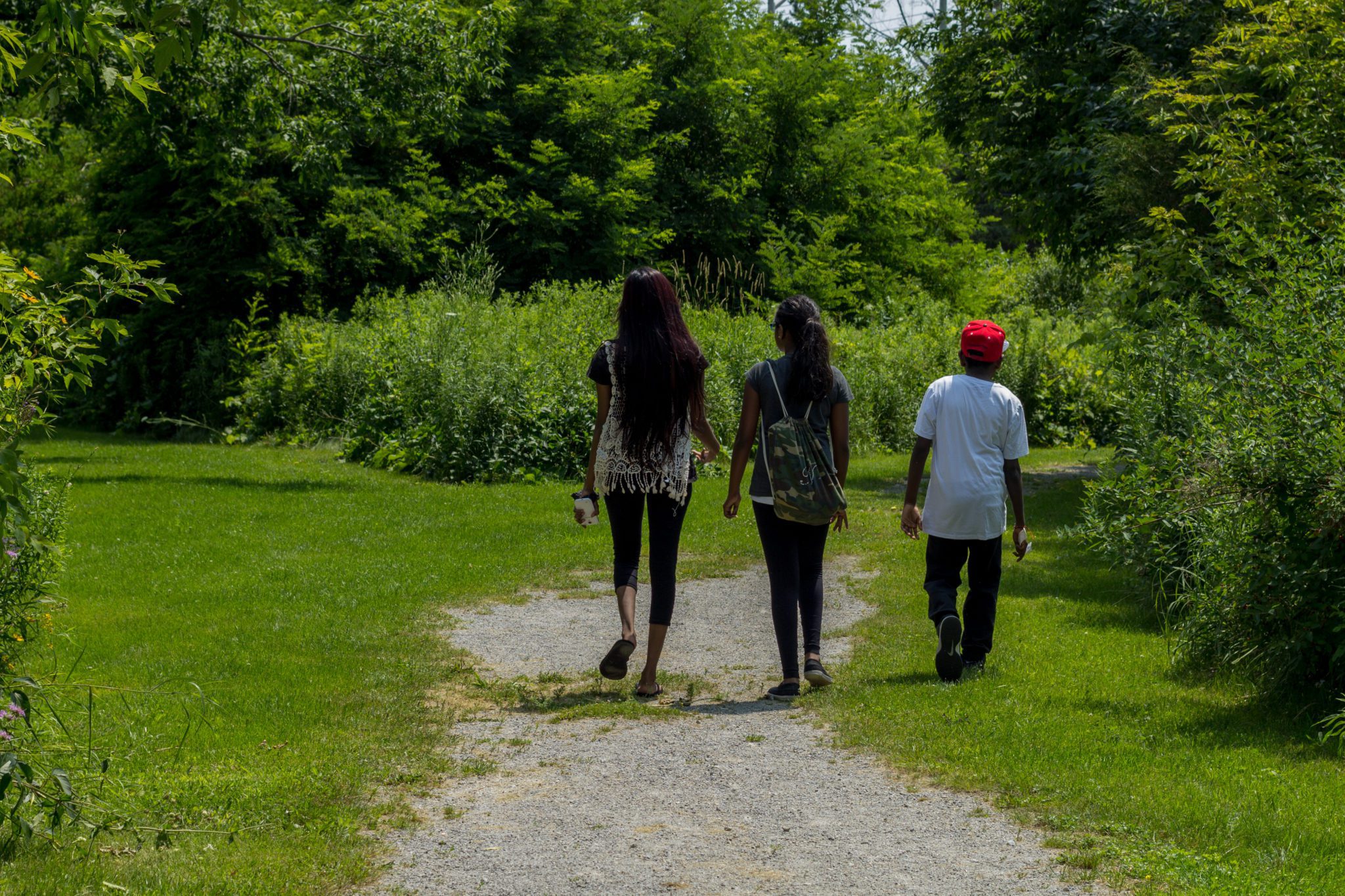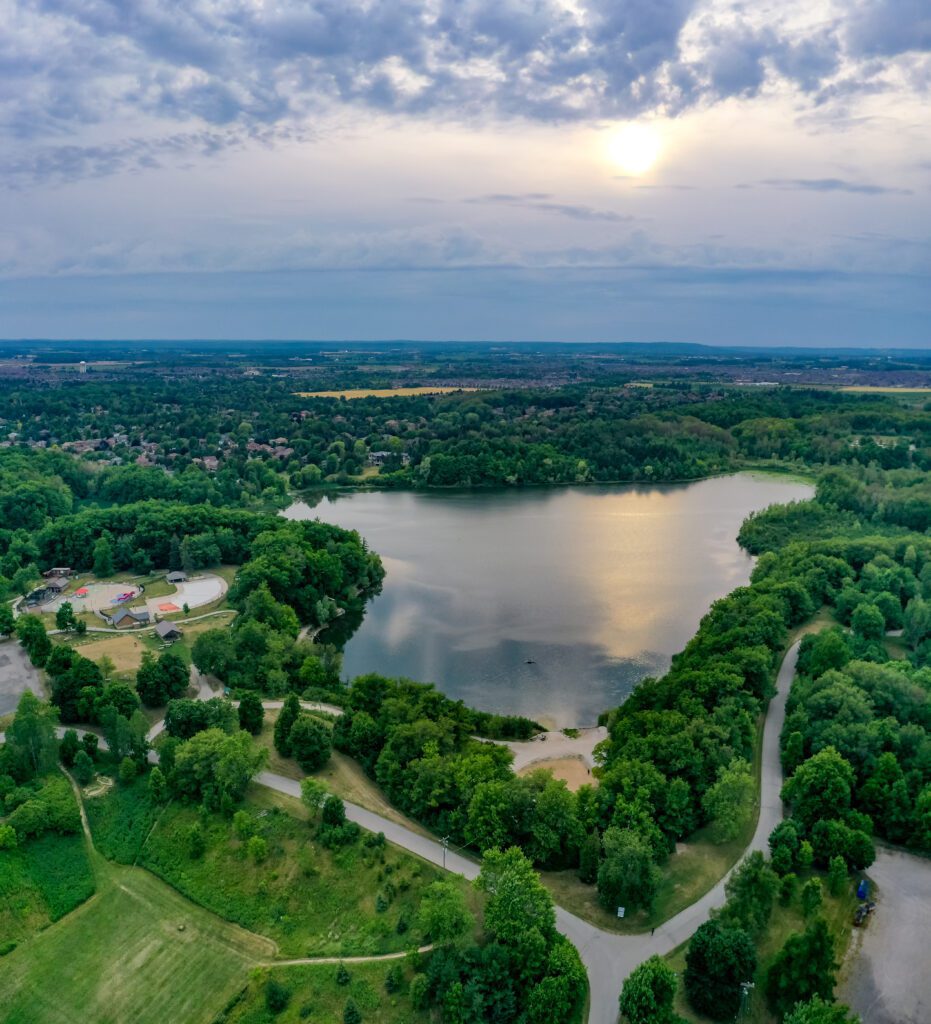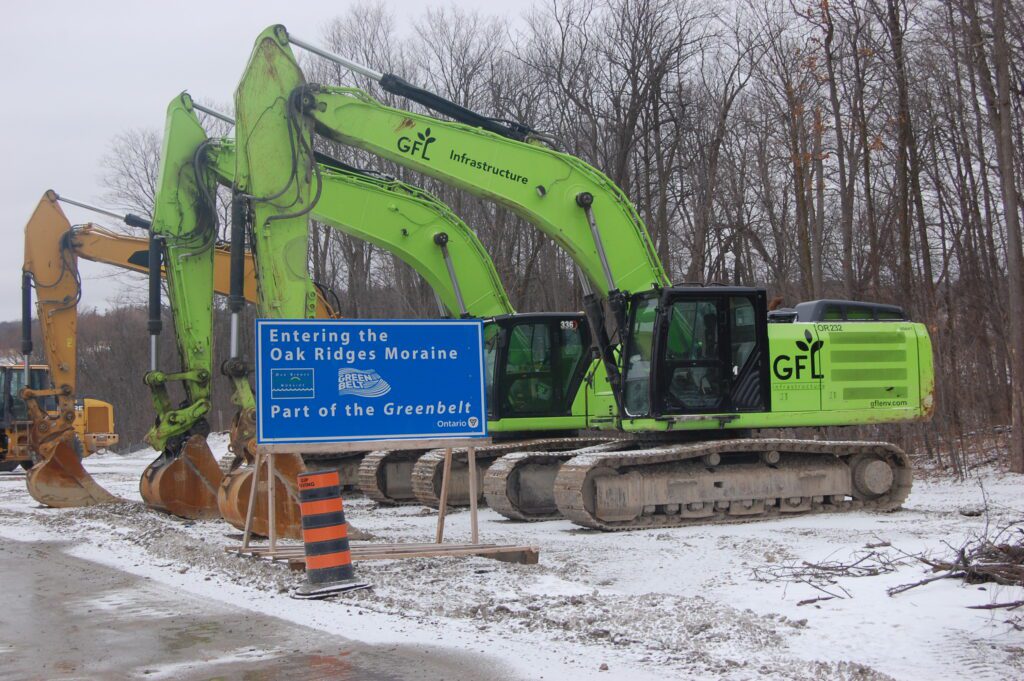In the recent election, a solid majority of Ontarians voted for candidates who promised to curtail urban sprawl, cancel Highway 413, and restore Ontario’s conservation authorities and endangered species protections and turn car-dependent suburbs into complete communities.
However, because of the mechanics of Ontario’s electoral system, most of the MPPs elected did not make these commitments. That’s why Ontarians will need to keep fighting at every level of government, for laws, policies and decisions that protect the environment. We’ve done it before and we know it works!
Here are five ways to get involved right now:
1. Demand a thorough Federal Environmental Assessment and the rejection of Highway 413
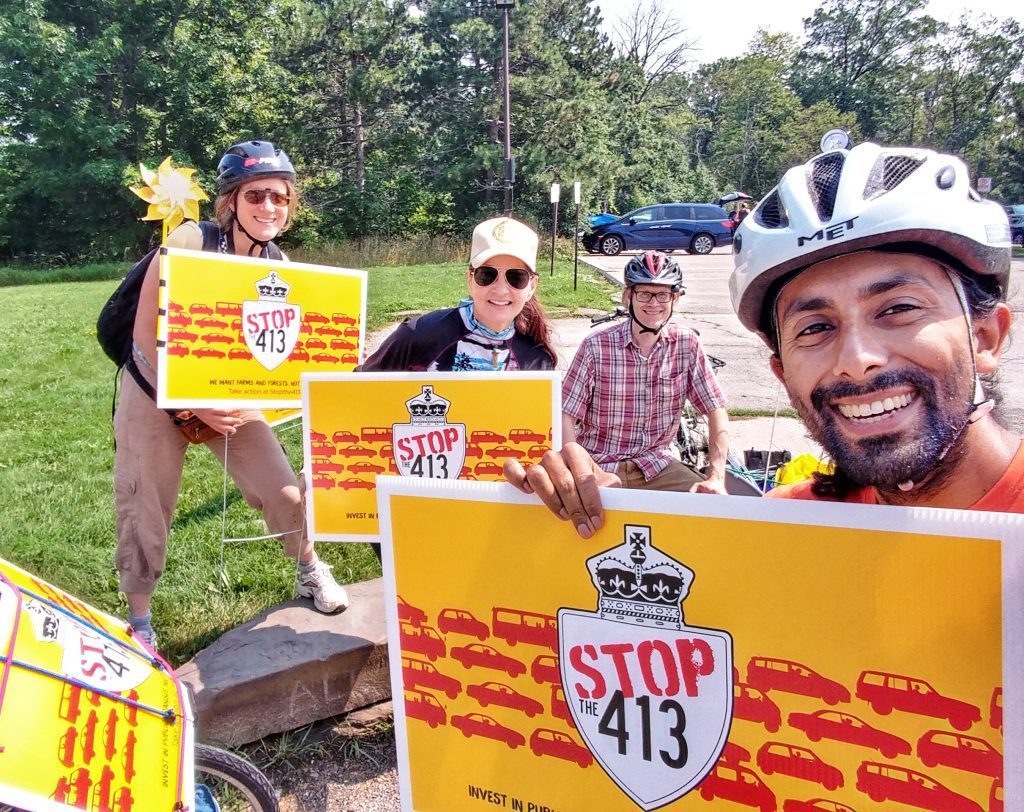 While most Ontarians voted for candidates who committed to cancelling Highway 413, the newly re-elected government is committed to squandering billions of dollars and huge swathes of farmland and natural heritage on a destructive highway that would put more cars on the road and have only a 30 second impact on travel times.
While most Ontarians voted for candidates who committed to cancelling Highway 413, the newly re-elected government is committed to squandering billions of dollars and huge swathes of farmland and natural heritage on a destructive highway that would put more cars on the road and have only a 30 second impact on travel times.
The good news is that the decision is no longer entirely in the provincial government’s hands. Because of potential harms to federally-listed species at risk and potential adverse impacts on the traditional territories of Indigenous nations, as well as a massive outpouring of public opposition to the scheme, the federal Minister of Environment and Climate Change has designated the project for a potential environmental assessment by the Federal Impact Assessment Agency.
As part of the Agency’s decision about the level of assessment it will conduct – none, partial or full – there will be an important opportunity for input from the public. The more outcry by the public against the highway, the more likely the Agency will do a full environment assessment. This process provides us an opportunity to demand an assessment that is deep and thorough – which could ultimately kill Highway 413 once and for all.
The comment period isn’t open yet. But for now, you can send an email to the Federal Environment Minister and your MP to let them know you oppose Highway 413 and we’ll let you know when the Federal Impact Assessment Agency begins its comment period.
2. Fight sprawl by supporting the approval of more homes in your neighbourhood
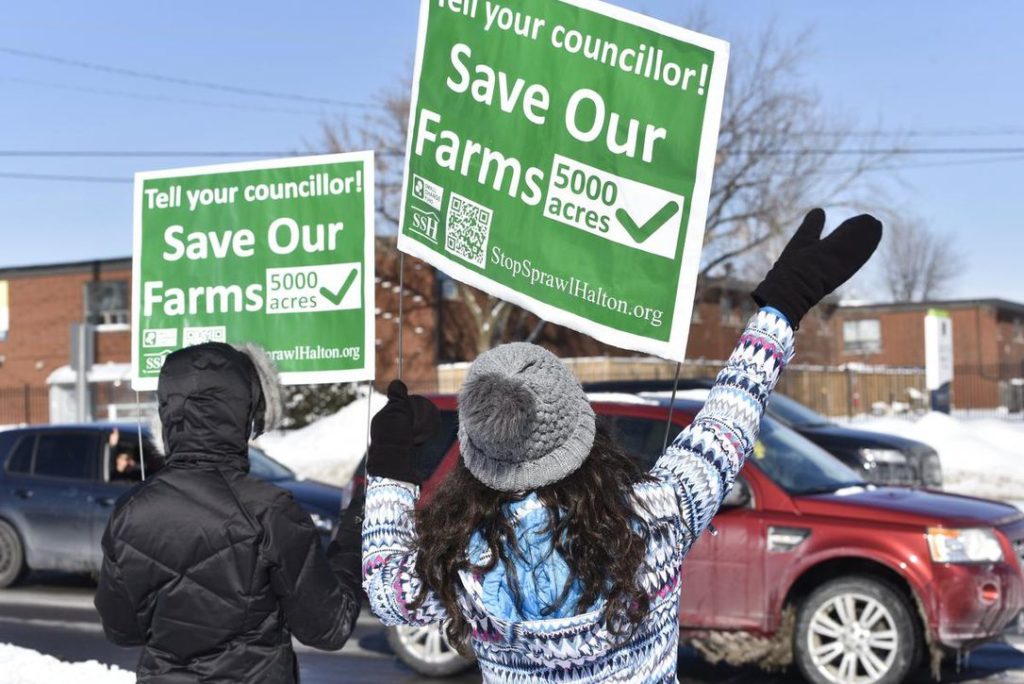 Over the past year, thousands of GTHA residents have written or deputed to their regional and City councillors asking for official plans that keep their farmland and natural areas off limits for residential sprawl development. While councillors in regions like Hamilton and Halton found ways of doing this, others allowed themselves to be railroaded, by a rigged provincial process, into voting for plans that would needlessly open up more countryside for development applications. The composition of the new provincial legislature makes it unlikely that these rules will be changed before these pointless, dangerous boundary expansions are implemented.
Over the past year, thousands of GTHA residents have written or deputed to their regional and City councillors asking for official plans that keep their farmland and natural areas off limits for residential sprawl development. While councillors in regions like Hamilton and Halton found ways of doing this, others allowed themselves to be railroaded, by a rigged provincial process, into voting for plans that would needlessly open up more countryside for development applications. The composition of the new provincial legislature makes it unlikely that these rules will be changed before these pointless, dangerous boundary expansions are implemented.
Luckily, there’s a way for you to prevent that sprawl from being built, even where it’s legally permitted. History shows each and every additional apartment unit, garden suite, townhouse or other compact home added to existing built up areas represents one less unit of farmland or habitat lost to bulldozers. Thanks to higher than expected growth in Toronto, and higher development densities in the 905, only a small portion of the land set aside in previous boundary expansions has actually been used.
Most GTA residents want to live in existing neighbourhoods where it is possible to get by without a car. By showing up at community consultations, phoning your councillor, and deputing in favour of approving housing development with as many units as possible within existing built up areas, we can divert new households away from sprawl, and kneecap land speculators plans to pave natural areas such the Peel Plain, the headwaters of Carruthers Creek, and even the Greenbelt.
3. Demand that your municipal government end exclusionary zoning
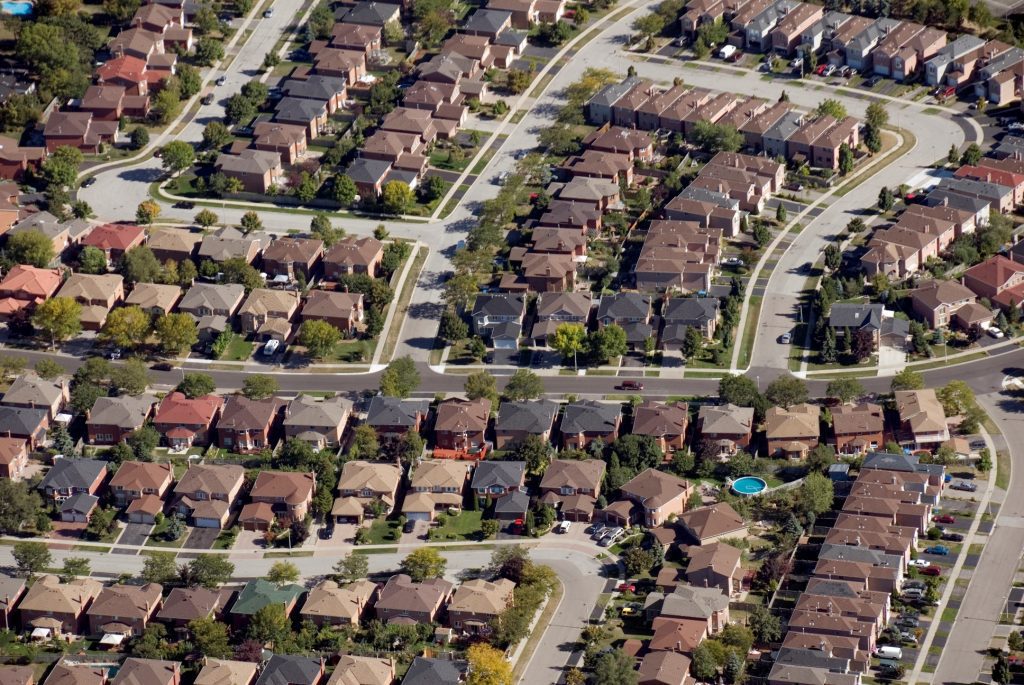 Most of Ontario’s post World War II neighbourhoods currently lack the population densities needed to support the frequent, reliable public transit and amenities within walking that are required to let people live conveniently without a car. Most Ontarians voted to fix this problem by replacing “exclusionary zoning”, which keeps most neighbourhoods limited to single detached homes, with new rules designed to add more townhomes, semi-detached houses and low-rise walk-up apartments to those existing neighbourhoods. However, the composition of the new legislature makes it unclear whether the provincial government will actually outlaw exclusionary zoning across the province.
Most of Ontario’s post World War II neighbourhoods currently lack the population densities needed to support the frequent, reliable public transit and amenities within walking that are required to let people live conveniently without a car. Most Ontarians voted to fix this problem by replacing “exclusionary zoning”, which keeps most neighbourhoods limited to single detached homes, with new rules designed to add more townhomes, semi-detached houses and low-rise walk-up apartments to those existing neighbourhoods. However, the composition of the new legislature makes it unclear whether the provincial government will actually outlaw exclusionary zoning across the province.
The good news is that municipal governments have the power to remove exclusionary zoning within their own boundaries. Municipalities like Toronto and Hamilton are already developing land use changes that would legalize forms of multi-family housing throughout residential neighbourhoods. By supporting these and similar initiatives, pushing to allow even more low-rise housing types (e.g., four- and six-plexes) and demanding the elimination of minimum lot widths, minimum parking requirements, suburban side-setback requirements and other rules that make it easier to build one McMansion than several compact family homes, you can help your car-dependent subdivision develop the density it will need to become a complete community with amenities and high quality public transit in easy walking distance.
4. Get involved in the Municipal Election

For at least the next four years, the fate of Ontario’s environment will depend, to a large degree, on the decisions of our municipal governments. It will be up to municipal politicians to end exclusionary zoning, exceed provincial targets for adding more homes to existing neighbourhoods, ensure that greenfield development is not approved with less than public transit-supportive densities, aggressively retrofit their street networks to prioritize public transit and active transportation, and keep development out of areas like the headwaters of the Carruthers Creek.
That means that a great deal is riding on the outcome of this October’s municipal elections. Whether it’s voting and campaigning for candidates who are strong on the environment, educating candidates about what makes for a strong environment platform, or running yourself to replace councillors who voted for sprawl, Highway 413, and exclusionary zoning, it’s vital that you do what’s necessary to elect a pro-environment mayor and council in your local and regional municipality.
5. Celebrate farms and natural areas in our Contested Countryside

After a difficult few years fighting against the Ontario government’s anti-environment agenda, the prospect of jumping directly into more organizing and campaigning may seem a little daunting. However, at least one of our pro-environment actions should prove to be balm for your soil. With potential settlement boundary expansions theoretically open the door to sprawl development applications in many parts of the GTHA, the security of farms and natural areas in our present contested countryside – sometimes called the “white belt” – depends to some extent on how large the threats to each area looms in the public imagination.
That’s why introducing yourself and your friends and neighbours to the joys and wonders of our threatened green-spaces is a win for the environment that will also nourish your spirit. Bring your family, your friends, or even an organized neighbourhood walking group, out to explore a local forest or stream threatened by boundary expansion. Sample produce from a local farm or ride a bicycle from farm to farm.
Experience the beauty of the areas that surround our cities and towns. It’s a great way to enjoy the summer, and help protect Ontario’s environment while you’re at it.



